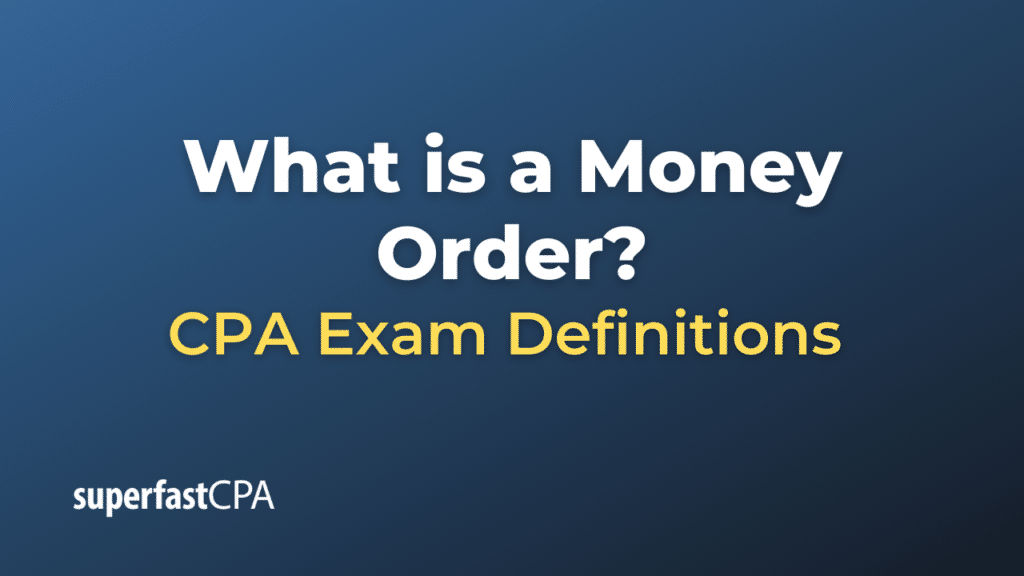Money Order
A money order is a payment order for a specific amount of money. It’s a secure way to pay or send cash that, unlike a personal check, isn’t directly linked to a bank account. Money orders are paid for upfront, so they won’t bounce due to insufficient funds, like a check might.
Money orders are often used to send money both domestically and internationally when the receiver may not accept a personal check, or the sender doesn’t want to use a bank account for the transaction. They can be purchased at a variety of places, including post offices, grocery stores, and convenience stores, as well as financial institutions like banks and credit unions.
To fill out a money order, you generally need to write the name of the person or business you’re paying, sign your name, and sometimes provide an address or memo to indicate what the payment is for.
The recipient of the money order can then deposit or cash it at their bank or a money order issuer, similar to a check. Some forms of money orders may also have added security features, like a stub that you can keep for your records, or a receipt that can be used to track the money order or confirm that it has been cashed.
While money orders can be a convenient and secure form of payment, they usually come with a fee, and they can also be targets for scams, so it’s important to purchase them only from reputable sources.
Example of a Money Order
Let’s say you are purchasing a used car from a private seller. The seller doesn’t know you personally and doesn’t want to take the risk of your personal check bouncing due to insufficient funds. They request that you pay with a money order instead. Here’s how you might do it:
- You go to your local post office, where they offer money orders. The car costs $5,000, so you ask for a money order in that amount.
- You’ll need to pay the $5,000 upfront, plus a small fee for the service. This could be around $1.25, but the exact amount varies by location and the size of the money order.
- The post office will then give you a document similar to a check. It will have fields for the payee’s name, which you fill in with the car seller’s name, and your signature. There might also be a field for your address and a memo line where you can put a note about what the payment is for (like “used car”).
- You then give the money order to the car seller, who can deposit it at their bank just like a check. Since the funds are guaranteed, the seller knows they will get their money.
- You also get a receipt for your money order. If anything goes wrong (like if the seller claims they never got the money order), you can use the receipt to track the money order or show that it was cashed.
In this way, using a money order gives both you and the seller a secure, reliable way to transact without involving bank accounts directly. However, it’s important to remember to only buy money orders from trusted sources, and be cautious when accepting them from others, as they can be counterfeited.












